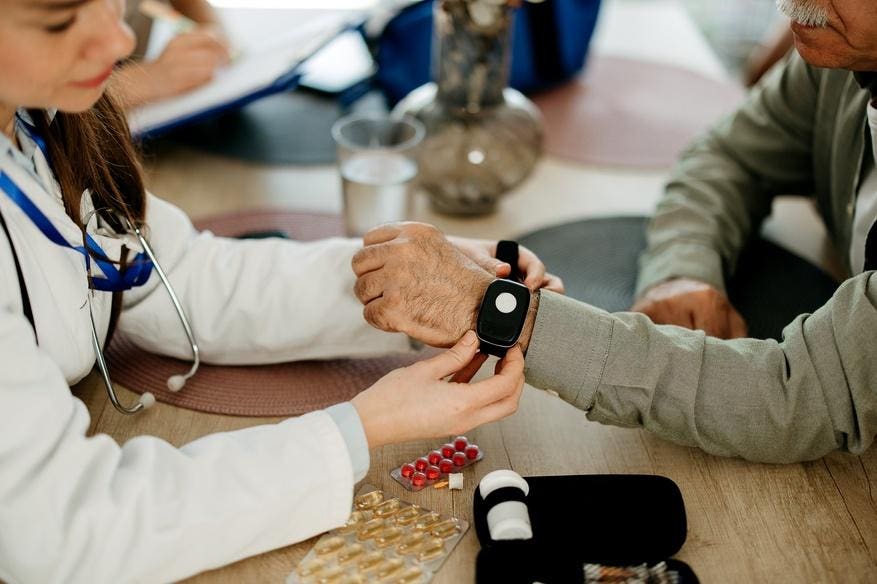Kent Dicks, Founder and CEO of Life365.
Healthcare technology has made significant advances in recent decades, including with innovations such as electronic health records (EHRs), wearable sensors, genetic testing and virtual care/remote patient monitoring.
While groundbreaking, this technology could also be contributing to clinician burnout. A study published in 2024 showed a collective clinician burnout rate of over 40%, which was 2.43 times more likely for those who spent time outside work in their EHR system.
On the other hand, at least 80% of patients are overwhelmingly in favor of using health-monitoring technology in their homes and are receptive to using it to monitor their blood pressure, blood sugar, oxygen levels and other vital signs. Yet, at the same time, if the in-home technology becomes too complex or burdensome, it could pose risks to patients’ health and the remote patient monitoring program. This is especially relevant to older patients and those living in rural areas who are more likely to seek support for their monitoring systems.
It is clear that to make virtual care clinically and financially successful, the technology needs to be as invisible as possible for patients and clinicians. To accomplish this, health system leaders must strategically consider their virtual care/remote patient monitoring program, focusing on usability and automation.
Drowning In Data
It is not only the growing data entry demands driving clinician burnout. The abundance of data physicians and other providers receive is also a major contributor. U.S. physicians cite overwhelming amounts of data as a top barrier to new health tech adoption, and I find that many simply don’t know what to do with the data.
Adding remote patient management/virtual health demands and the associated influx of data to this information overload is a recipe for failure. Data, rather than insight, forces clinicians to react to events, instead of identifying risks to their patients and preventing adverse health events that could result in an emergency department visit or hospitalization.
Data overload and technology complexity obstacles also apply to patients receiving virtual care. For example, too many monitoring devices, too much manual data entry and too many technical failures increase the risk of errors and the chances that patients and their families will become disengaged in the virtual care program.
How To Design An Invisible Virtual Care Model
While complexity is inevitable in developing new healthcare technology, it cannot infiltrate the user experience. On the contrary, a healthcare technology’s greatest power may be that providers and patients do not even realize it is working.
Making healthcare technology invisible is essential to launching and scaling successful virtual care/RPM programs, but it is easier said than done. Here are a few considerations for healthcare leaders when developing their initiatives.
1. Focus On The Biggest Pain Points
Health systems should not begin a virtual care program by remotely managing all the most common chronic conditions or reasons for hospital admissions. Instead, it is more feasible to focus on a single condition first and then gradually scale to more diseases. This gradual approach ensures patients receive needed care and providers are not overwhelmed with new workflows and technology.
2. Healthcare Is Local
Healthcare leaders must focus on the demographic and technology characteristics of the communities they plan to serve with their programs. As shown in the results I shared earlier, older adults and patients in rural areas may face tech infrastructure, tech literacy or anxiety issues that may impede progress in virtual care and their outcomes. Even healthcare giant Kaiser Permanente began its RPM program in 2016, focusing just on hypertension among patients treated at its Capitol Hill Medical Center in Washington, D.C. before expanding it to many other conditions.
3. Automate Wherever Possible
Clinicians must receive relevant and actionable insights about patients, not just data they have to search through to find meaning. These insights should be personalized and prevention-focused so the clinician can take meaningful action. Similarly, patients at home should not have to manage numerous monitoring devices and manually input data that could instead be automatically collected and shared wirelessly in the background.
Recent data backs this up. The American Medical Association reported this year that 57% of its members said that AI’s ability to automate administrative processes, such as data collection and analysis, is the most significant opportunity for the technology.
Driving Engagement And Recovery
Most importantly, creating a virtual care model that removes the administrative and technical burden from patients and providers can help drive engagement and better outcomes. A 2021 review of studies found that half of the RPM programs reduced hospital admissions, length of stay and emergency room visits across all the chronic conditions examined.
While it is clear that cutting-edge healthcare technology and care delivery models will be essential, the user experience must be the highest priority. In order to sustain engagement and improve outcomes, technological complexity and sophistication must be invisible to the patient and clinicians.
Forbes Business Council is the foremost growth and networking organization for business owners and leaders. Do I qualify?
Read the full article here











